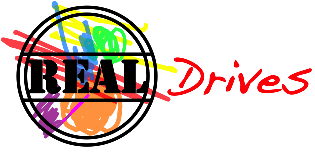
In everything it is important to realize that behavior is a method to realize things. The preference wants something, the environment is assessed, and then behavior is applied to reach the desired results. It would seem logical then that behavior is not a reflection of the inner person, but much more a tool. Behavior is used as a tool to reach a goal, which from the viewpoint of the drive appears useful. The color of the behavior can then be very different from the color of the preference. For instance an orange motivated car salesman really won’t show orange behavior if he wants to sell that car. He is more likely to employ blue or green behavior: reliable and friendly. And that could well be a very successful behavior style. And if the style works, then the salesman scores orange.

Successful behavior is not very easy. Behavior moves in a tension between three poles, those of effectiveness, acceptance and energy. Successful behavior is accepted by the environment, is effective and doesn’t require much energy. But in all three of those areas it can go wrong: wrong behavior can lead to a loss of acceptance, of effectiveness and of energy.
There is no one reason why people adapt. People can consciously adapt, but often it happens unconsciously. Especially copycat behavior is often unconscious and with regularity we see people hit themselves on the forehead: “Oh how stupid, why did I do that? Why didn’t I stay truer to myself?” For conscious and semi-conscious adaptations people can often list a reason. Where people suppress a drive in their behavior the reason is often given as ‘it wouldn’t be appropriate here’. When applying behavior you would not expect based on the drive, people can often give a very good reason. In the table below we bring that into focus.

All judgements we make about our environment flow from our will. Our will is the measure of all things and determines if we thinks it’s too cold or too how, dirty or clean, too big or too small. Things that closely match our will we barely perceive, as opposed to the things that we do not like. Those bother us, nag at our will. Our will is the colored lens through which we perceive and judge our environment. People who want different things, see and here different things and judge them differently.
Someone who receives a message, instantly seeks to answer the question: does this message I received fit with what I want, or not? To answer that question there are two paths to choose from: judge the messenger or judge the message. If we don’t recognize our own drives in the messenger then receiving the message becomes very difficult. Think about it:
- Why would you, if you’re driven by purple, listen to someone who doesn’t feel what is important in your circle?
- Why would you, if you’re driven by red, listen to someone who doesn’t have the power to do what he says?
- Why would you, if you’re driven by blue, listen to someone who doesn’t know how things are truly put together?
- Why would you, if you’re driven by orange, listen to someone who doesn’t propose anything?
- Why would you, if you’re driven by green, listen to someone who come across as arrogant?
- Why would you, if you’re driven by yellow, listen to someone who says things that just don’t make sense?
In many meetings it’s easy to see: when someone with a very different drive-pattern takes the floor, all eyes focus on the person with the highest rank. The speaker quickly senses that the attention for his message is small. No matter how valuable the message may be, he won’t really be heard if the drive of the messenger differs van the patterns of the receivers of the message.
How does that then work in groups? An important rule then comes into play: People tend to communicate at their highest mutual drive. People with a drive-profile that doesn’t or barely matches the mutual drive of a group, have great difficulty in progressing in the group. The consequence of that is that people in groups strengthen their view of reality, no matter how distorted that might be. People with different drive patterns who see the world differently, are a poor fit in the group and have trouble gaining attention for their different views, reinforcing the feeling of being shut out.
Language too isn’t always helpful in creating clarity. With our words we try to make things clear, but more often than not language is more likely to veil rather than clarify. Many words are often ‘loaded’ by the drive of the speaker, but also the recipient. And if they have different drive-patterns, they may think they understand each other, but often that is an illusion. For example: a blue speaker interprets ‘integrity’ as people who stick to the rules, but an orange recipient of the message thinks that integrity means that he’s open about his goals. They completely agree that things should be done with integrity, but give a very different value to the word ‘integrity’.
 discovering personal drives & team culture
discovering personal drives & team culture